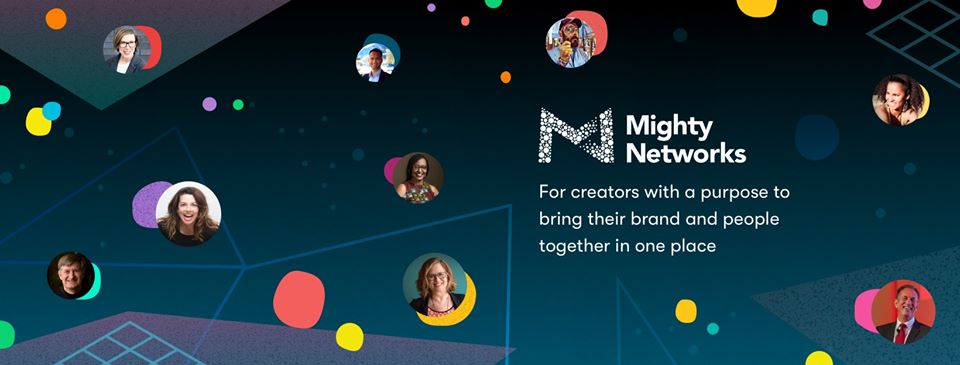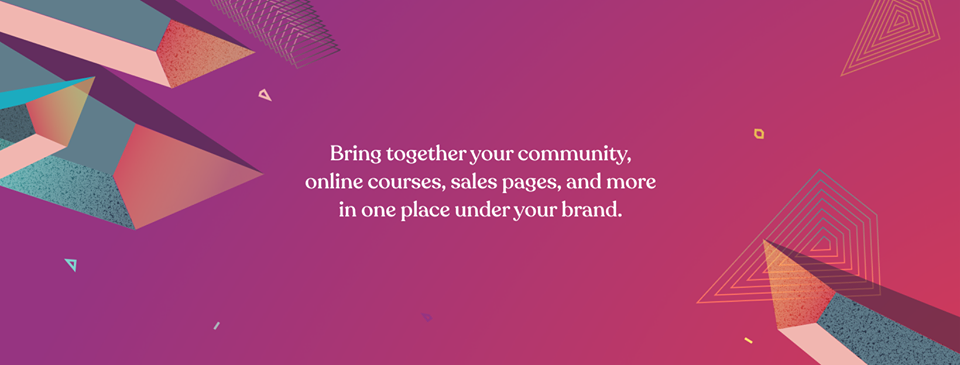13 business models to generate revenue
How businesses can generate revenue has changed a lot over the last decade. Choose the most appropriate business model for your company from these 13 business models updated for 2021.
1. Control and be rewarded from your own data business model
In exchange for convenience and a personalized experience, brands have been telling consumers to give away their personal data and relinquish any control over it.
We now know how brands used their consumers’ data and the damage they have caused.
Also, selling users’ personal data to third parties has been a huge source of revenue for these companies.
According to the latest PwC report, times are changing.
Consumers are demanding both a better, data-enabled experience and more flexibility and control over how their information is used.
In addition to this, consumers are starting to ask themselves: why should only companies profit from selling their data? They should take a piece of the pie as well.
Gener8 Ads is a web browser offering exactly that: it lets users control and earn from their data whilst browsing the web.
Gener8 Ads works with companies in the capacity of a media owner to do three things:
1. Provide premium media for them to reach a highly defined audience.
2. Use their proprietary first-party data to unveil actionable insights about their customers, eg. their purchase habits.
3. To promote their brands and drive action from their audience.
How does Gener8 Ads generate revenue?
Gener8 Ads gives 80% of the revenue back to the user and takes a 20% cut.
Users download the Gener8 Ads browser and choose to keep their data private or earn points any time their data is used. They can redeem these points for products, vouchers or donations to charity.
Watch Sam Jones, the company’s founder pitch Gener8 Ads on Dragon’s Den:
2. Empowering creators business model
What is the creator economy?
The creator economy has been growing exponentially in the past few years. It is estimated that more than 50 million people worldwide consider themselves to be creators.
Mighty Networks defines the creator economy as an economy built around highly motivated, creative, and skilled individuals that have started their own brand, business, or community utilizing a digital platform to share their work.
Not coincidentally, Mighty Networks is one of the platforms contributing to the creator economy. It is a community-focused platform that helps users build their businesses.
Mighty Networks offers users three plans they can choose from: the free plan, the business plan ($81/month) and the community plan ($23/month).
This is how users can drive business revenue depending on their chosen pricing plan:
- Charge for access to their membership site or group
- Charge for access to their online courses
- Becoming a Mighty Affiliate
3. Shopstreaming business model
Shopstreaming is the combination of live streaming, entertainment and shopping.
China is leading the shopstreaming market with 67 billion dollars in global sales for 2019 and an estimated 149 billion dollars for 2020.
If these stats show anything is that consumers want to buy from influencers during shopstreaming sessions.
It’s a business opportunity that saw various developers create digital platforms intended to transform the way to stream live events.
Livescale is one such developer. The company’s shopstreaming platform, LivescaleTV enables businesses to reach, engage, and monetize their audience, as well as understand the behaviours and interactions of their users.
L’Oréal Canada was the latest brand to use Livescale TV when they hosted a three-day shopping streaming festival.
Results:
- over 50% of product purchases from new customers,
- 300% higher conversion rate than the company’s website,
- 40% audience engagement.
4. Blockchain-as-a-service business model
According to recent reports, the global blockchain-as-a-service market size is expected to grow at an impressive compound annual growth rate of 62.73% to $52.5 billion by 2026.
Blockchain as a Service (BaaS) is a type of blockchain service offering that allows business customers to use cloud-based solutions to develop, host and adopt their own blockchain applications, smart contracts and other relevant functions on the blockchain.
The main drivers of the global Blockchain-as-a-Service market are:
- increasing awareness of the benefits provided by blockchain technology;
- need for security in transactions.
The top leaders operating in the Blockchain-as-a-Service (BaaS) market: Oracle, Microsoft, Accenture, Alibaba, IBM and Huawei.
5. Subscription business model
The subscription business model is a business model in which customers pay a recurring price at regular intervals for access to a product or a service.
The first companies to adopt the subscription business model were the news publishers whose readers paid a monthly fee to have newspapers and other magazines delivered to their door.
In more recent times, companies providing digital tools and platforms like Canva, Monday or Grammarly generate recurring revenue based on the subscription business model.
Other companies didn’t start as subscription-based businesses but recognized an unmet need for their products to be delivered on a monthly basis.
Customers opt for products to be delivered on a monthly basis because it’s convenient and saves them precious time.
Here are some examples of products delivered in subscription boxes; some also provide customization:
- Dog food subscription boxes (PetPlate, Jinx, Crafted Kibble)
- Beauty care and makeup subscription boxes (GlossyBox, BoxyCharm, Birchbox)
- Meal subscription boxes (Pasta Evangelists, Raw Generation, Hello Fresh)
6. Freemium business model
Freemium is a business model in which a company offers basic features to users at no cost and charges a premium for supplemental or advanced features.
It’s an appealing strategy for both companies and customers. Free is a powerful word in marketing because of its ability to instantly grab a customer’s attention. If basic free features are valuable to them, customers are more likely to pay for advanced or additional features.
When used correctly, the freemium business model can drive massive user adoption.
Dropbox, Zoom and Spotify are great examples of the freemium business model.
Dropbox has an annual revenue of $1.91 billion, Zoom – $2.6 billion and Spotify, $9.34 billion.
7. Dropshipping business model
The dropshipping business model is used in retail where the seller purchases the product from a third party (manufacturer or wholesaler) and has it shipped directly to the customer. The seller doesn’t hold the products in stock.
The main benefits of the dropshipping business model:
- Low investment
- Easy to start
- Perfect for beginner entrepreneurs
- Flexibility
- Remote work
- Easy to scale
- Wide selection of products
Among the top eCommerce platforms for dropshipping businesses are Amazon, Shopify, WooCommerce and Magento.
8. Drop-servicing business model
Drop servicing is a business model where your company sells other people’s services online.
Your company doesn’t perform the service, a third-party company performs the service.
9. Commission-based business model
The commission-based business model is a revenue model where a user is charged a fee for each transaction. The platform may charge either the seller or the buyer.
Examples of commission-based businesses: PayPal, Uber, Airbnb, Etsy, eBay.
10. Hidden revenue business model
If the service is free, you are the product, goes a very famous saying.
What it means is the service is not actually free. As the user, you pay for it, not with money, but with your personal data.
It’s the business model of digital giants like Google, Facebook, Instagram, Pinterest etc which collect users’ data and sell it to businesses for advertising purposes.
In 2020, Google generated almost $147 billion in revenue from the company’s ads business. Facebook generated close to $84.2 billion in ad revenues.
11. Razor and blade business model
The razor and blades business model is a business model in which one item is sold at a low price in order to increase sales of a complementary good, such as consumable supplies.
The best examples of companies generating revenues with this type of business model are suppliers of razors and blades (Gillette), printers and ink cartridges (Xerox), coffee makers and coffee pods/capsules (Nespresso), 3D printers and printing materials, game consoles and games.
12. Reverse razor and blade business model
The reverse razor and blade business model is a type of business model where the main product is sold at a premium price and the consumable, at a lower price.
Apple is the standard example of the reverse razor and blade business model. The main product, the iPhone, is sold at a premium price. Once the customer owns an iPhone, they have access to low-priced features like music on iTunes, movies or Mac OS and iWork free of charge.
13. Affiliate marketing business model
The affiliate marketing business model is a revenue model in which a company compensates third-party publishers to generate traffic or leads to the company’s products and services.
The publishers are paid in commission for every sale they make.
How does it work?
The affiliate shows a link for the product they are selling on their website or social media, customers click on the link which sends them to the store. If they purchase the product, the affiliate is paid a commission.
Two of the top-earning affiliate marketing platforms are Amazon Associates and Shopify Affiliate Program.
Join the Conversation
We’d love to hear what you have to say.
Get in touch with us on our LinkedIn Page, Facebook Page, Twitter or TikTok.
Mighty Networks, the community platform that helps you drive business revenue
You’ve spent months, maybe a year or two to grow your Facebook Group. Whether you provide coaching, tips and tricks on how to lose weight or recommendations that help people get hired faster, you’ve been there for your group’s members day in and day out, giving value while keeping the trolls at a distance. Suddenly you realize managing your Facebook Group has turned into a full-time job. The group is a valuable resource for its members but is generating costs and little to no revenue for your business.
What if there was a better way to grow an engaged community and also drive revenue from it?
I recently came across Mighty Networks when someone in my LinkedIn network mentioned it in a comment as a community-focused platform.
Hm, I haven’t heard of Mighty Networks. What is it? Let’s find out!
Mighty Networks, the community-focused platform that helps you build your business
Create a Community-Powered Brand with Mighty Networks from Mighty Networks on Vimeo.
Mighty Networks enables entrepreneurs, organizations, and companies to create and grow a community-powered business. It is a platform where you can bring your community, online courses, and memberships together in one place.
You can build a landing page for your business, publish articles, share content and create an online course platform for your audience.
What do you get when you choose Mighty Networks?
Mighty Networks offers its users three plans they can choose from: the free plan, the business plan ($81/month) and the community plan ($23/month).
Being a pay-to-get-access community is actually a plus because if it’s free, the commitment isn’t there. When people pay a membership fee, it’s an investment and both parties, the Mighty Host (that’s how businesses on Mighty Networks are named) and its paying members are much more likely to engage, add value and contribute to their communities and the growth of their members.
Here are some of the features you get depending on your chosen plan:
- Personalized activity feeds for members
- Topics, articles and direct messaging
- Choose from public, private, and secret privacy options
- Use your own domain name for your Mighty Network
- Message ALL members (reach 100% of your members whenever you want)
- Polls and questions
- Organize events locally or virtually with text chat, Zoom, Facebook Live, or Crowdcast integrations
- Notify ALL members of any post you make or activity you think is important
- Access detailed analytics on every member, every post, and all activity
These are just a few features, check the complete list.
Also, it’s important to mention that Mighty Networks is 100% ad-free, GDPR compliant, SEO friendly and mobile-first.

source: Mighty Networks Facebook page
What else should you know?
Unlike the experience on Facebook, there are no distractions on Mighty Networks, no cat or baby videos that the algorithm pushes in front of us which makes maintaining focus a big challenge for everyone.
Mighty Networks doesn’t encourage distraction, it encourages focus so it’s better for your business.
Also, you may have noticed in the features mentioned above that with Mighty Networks you can message all members of your community, something you can’t do on Facebook Groups unless you become friends with every one of them.
What else can you achieve on Mighty Networks that you can’t with Facebook Groups? The goal of this article is not to do a comprehensive comparison with Facebook Groups so I invite you to find out by yourself.
Over the past few years, businesses have come to realize that being on Facebook had become a pay-to-play game. The algorithm is set up so that businesses need to pay Facebook to show one post to all their page followers. That is not the case with Mighty Networks.
The company’s 2017 news release says that Mighty Networks employs proprietary algorithms and smart technology built from the ground up for interests.
Businesses that have shifted their online community from other community-focused platforms have seen a higher engagement rate and the interactions much more meaningful, than on other platforms (source).
What differentiates Mighty Network from other community platforms?
Here are the main differentiating factors:
- Members are connected by their location, by the topics they choose and the categories they define
- Content and conversations never get lost
- Everything for an interest is in one place
I would also add that your personal data is not sold to third-parties for revenue generation.

source: Mighty Networks Facebook page
Here’s how you can drive business revenue depending on your chosen pricing plan:
- Charge for access to your membership site or group
- Charge for access to your online courses
- Becoming a Mighty Affiliate
You can set up payments within your Mighty Network and charge a one-time purchase or a subscription purchase. Stripe is the payment processor on Mighty Networks and you can charge a max price of $999.
Conclusion
Mighty Networks could be a good solution for your business if you:
- Are looking to build an online membership
- Have grown disappointed with Facebook (and there are plenty of reasons to)
- Are looking to have a course platform and community all together in one place
- Are trying to facilitate the conversation with your customers or user base
- Are looking to get involved and to learn more about what your community may need
- Are struggling with keeping your users on one platform
- Want to personally email your audience
Join the Conversation
We’d love to hear what you have to say.
Get in touch with us on our LinkedIn Group, Facebook Group or Twitter.



